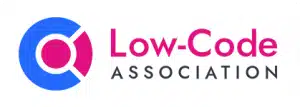Each workflow in the Process Designer starts with an Event.
| Event Type | Description |
| Widget Events | Events that are available for certain widgets, e.g. button press event. |
| Screen Events | Events related to screens, e.g. onInit and onAfterShow. |
| onAfterHide | After the navigation has been completed and the new page has covered the whole screen. Event is fired on the page which has been left. Can be used to stop any activity, such as animations or repeated data polling. |
| onAfterRendering | Called when the View has been rendered (therefore its HTML is part of the document). Post-rendering manipulations of the HTML can be done here. This hook is the same one that SAPUI5 controls get after being rendered. |
| onAfterShow | This event is fired every time when the app has made this screen visible. In case of animated transitions this event is fired after the transition finishes. This screen is now being displayed and not animated anymore. |
| onBeforeFirstShow | This event is fired before the NavContainer shows this child control for the first time. |
| onBeforeHide | This event is fired every time when the NavContainer has made this child control invisible. In case of animated transitions this event is fired after the transition finishes. This control is now no longer being displayed and not animated anymore. |
| onBeforeRendering | Is invoked before the Controller’s View is re-rendered. You would use onInit() in the case that the hook shall be invoked only before the first rendering. |
| onBeforeShow | This event is fired every time before the NavContainer shows this child control. In case of animated transitions this event is fired before the transition starts. |
| onInit | Called when a View is instantiated and its controls (if available) are already created. Can be used to modify the View before it is displayed to bind event handlers and do other one-time initialization. |
| onNavButtonPress | This event is fired when Nav Button is pressed. |
| Custom Events | Individual events within an application that can be published and subscribed at any time. |
| System Events | Events related to devices, e.g. onDeviceGoesOffline and onOrientationChange. |
Custom Events can be maintained in the Data Workbench or directly created in the event publish dialog
To use an event in other user stories, create a new Custom Event on the Publish Event tab.
Subscribe to a custom event in another user story to connect the logic between different user stories.
Example:
You have a process in User Story 1 that contains a condition to check if an input field is filled out after clicking on a “Login” button. Afterwards, the user should be navigated forward to the next screen.
Imagine you have the other user story exclusively for the whole navigation of your application. So you want the end of the event from User Story 1 (the navigation) subscribed to User Story 2.
Therefore we published the new Custom Event “LoginButton” in User Story 1 and subscribed to it in User Story 2.
User Story 1
User Story 2











